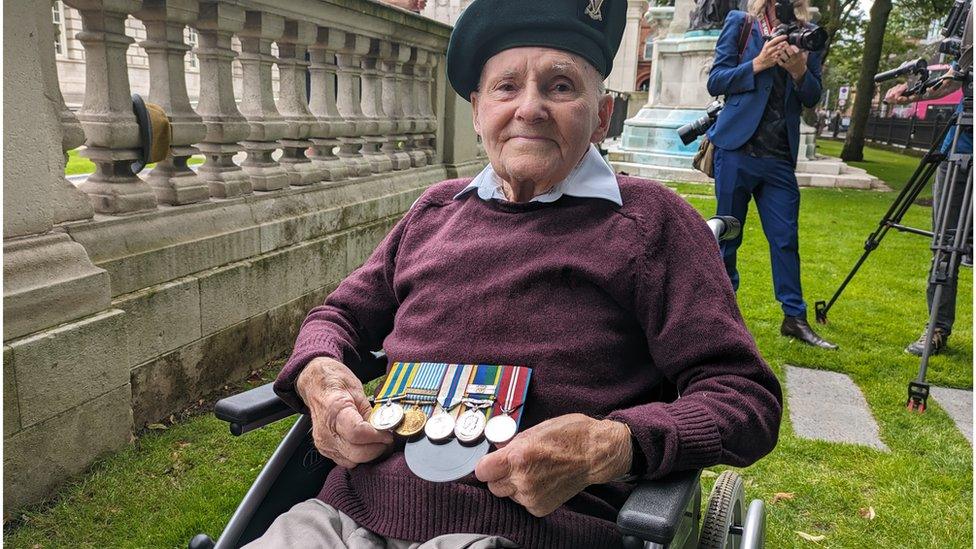'By the skin of my teeth I escaped the Korean War', says veteran
Royal Ulster Rifles veteran recalls Korean War
- Published
The Korean War is often referred to as ‘the forgotten war’.
Seventy-five years on, the memory of it remains vivid for those, like Albert Morrow from Bangor, who had a frontline view.
The 97-year-old joined the Royal Ulster Rifles (RUR) after watching soldiers return from the European theatre of World War Two.
He told BBC News NI he had never even heard of Korea, let alone know what would await him.
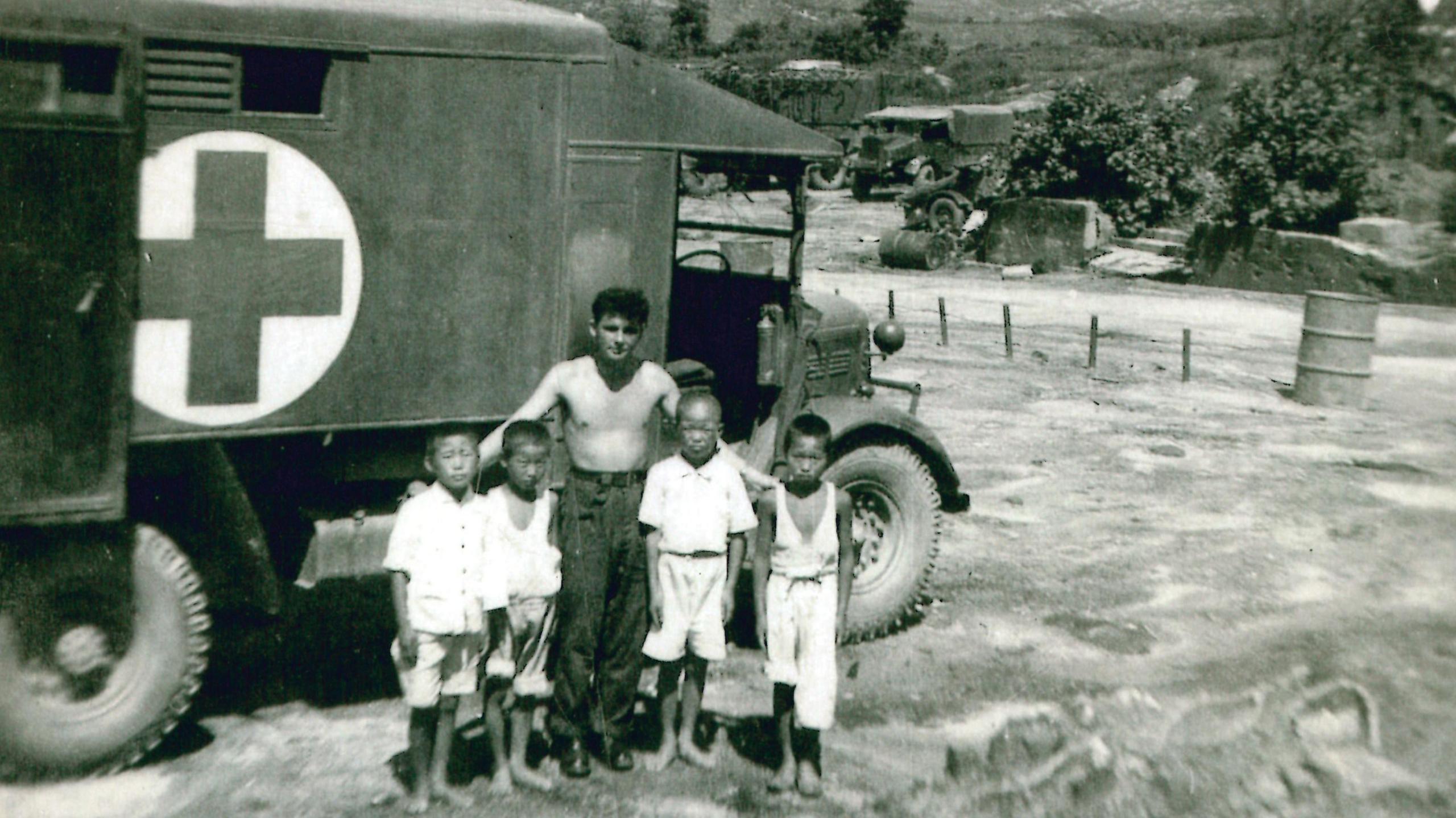
Albert Morrow, pictured with local children in Korea, in 1951
His battalion were deployed to 'K' originally for a warm climate in Khartoum but that changed to a much colder one in Korea.
Through freezing temperatures, rough terrain, attacks and great loss, he said he was lucky to make it home.
About 100 RUR soldiers were killed or reported missing in the Korean War.
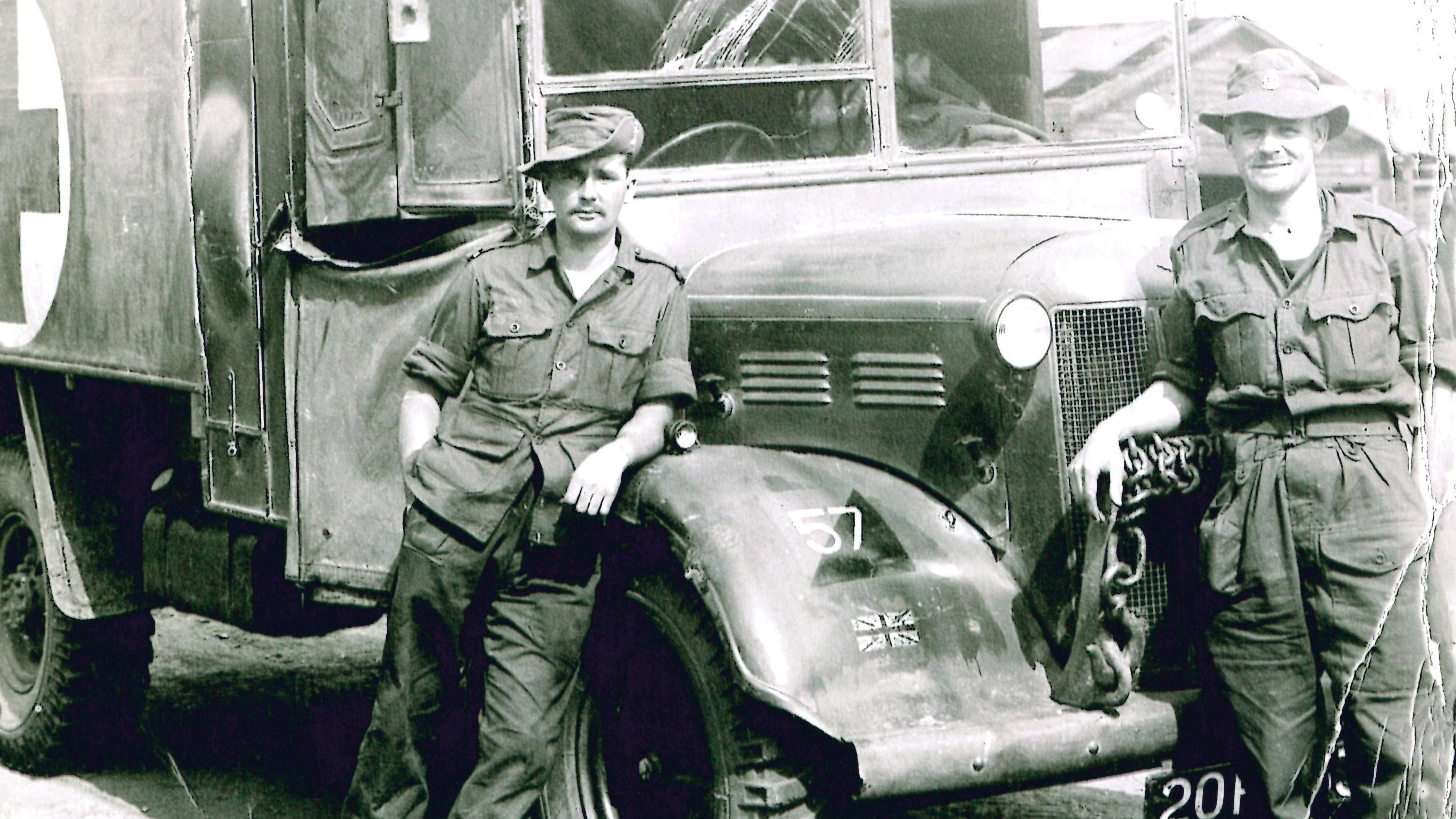
Albert Morrow, left, lived in Northern Ireland and Canada in later life
The Battle of Happy Valley
Warning: This article contains graphic descriptions of war
Morrow arrived in Pusan in November 1950. His battalion were quickly ordered to the frontline at Pyongyang, the North's capital.
Some of those travelled by train but Morrow, an ambulance driver, travelled by road.
He recalled the bitter cold, the poverty and living on 24-hour individual rations.
"Total devastation, you couldn't believe your eyes," he told BBC News NI.
He recounted facing extreme conditions, with ill-prepared equipment and that some of the attacks were "fierce" leaving him "naturally scared".
By Christmas 1950, Morrow's battalion was in ‘Compo Canyon’, north of Seoul, singing carols, days before they entered the Battle of Chaegunghyon, also known as Happy Valley.
This action, in January 1951, was to fight against advancing Chinese forces.
Morrow said he was tasked to recover the bodies of two soldiers who had been killed in action by phosphorus bombs.
"We got the first guy out and put him on the stretcher and he burned through the stretcher so we had to tie him with toggle ropes," he detailed.
"They were still burning, still smouldering.
"It was a very high wind up there and that inflamed things more."
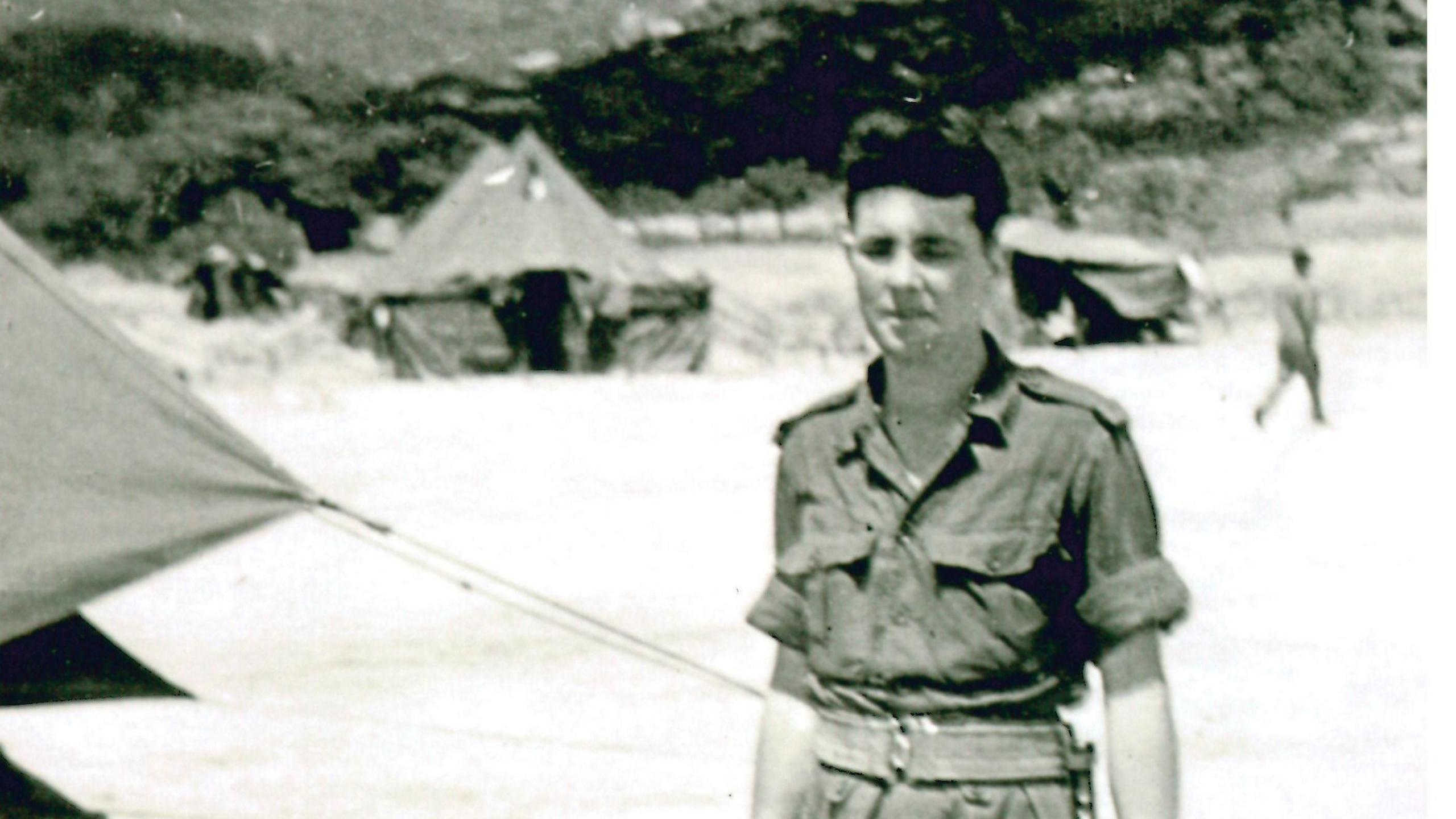
Albert later returned to South Korea in 2013 and 2018
When Morrow was leaving Happy Valley he said it was a lucky escape.
Some vehicles behind his ambulance were cut off by Chinese forces on either side.
Prisoners of war were taken, but Morrow was able to get away.
"Three or four vehicles behind me was a medical officer and his driver and they were captured. I just got out by the skin of my teeth."
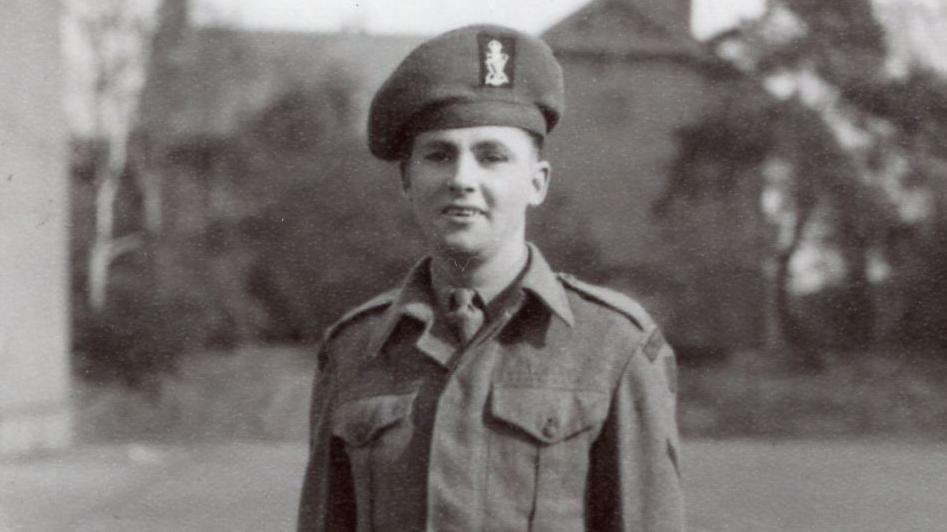
Albert pictured in Colchester, England, before his deployment to Korea
How did the Korean war happen?
Following World War Two, Korea, which had been under Japan's control, was split in two along the 38th parallel.
North Korea became a Soviet-backed communist state, led by Kim Il Sung.
South Korea was led by the anti-communist and pro-American Syngman Rhee.
On 25 June 1950, the North's Korean People's Army invaded the south, quickly advancing to the port area around Pusan (now called Busan).
The US responded by sending troops and rallying the support of the United Nations Security Council.
They quickly pushed the attack back across the 38th parallel towards China's border.
China responded and the war became a stalemate.
An armistice was agreed in July 1953, returning North and South Korea to the 38th parallel border as it is today.
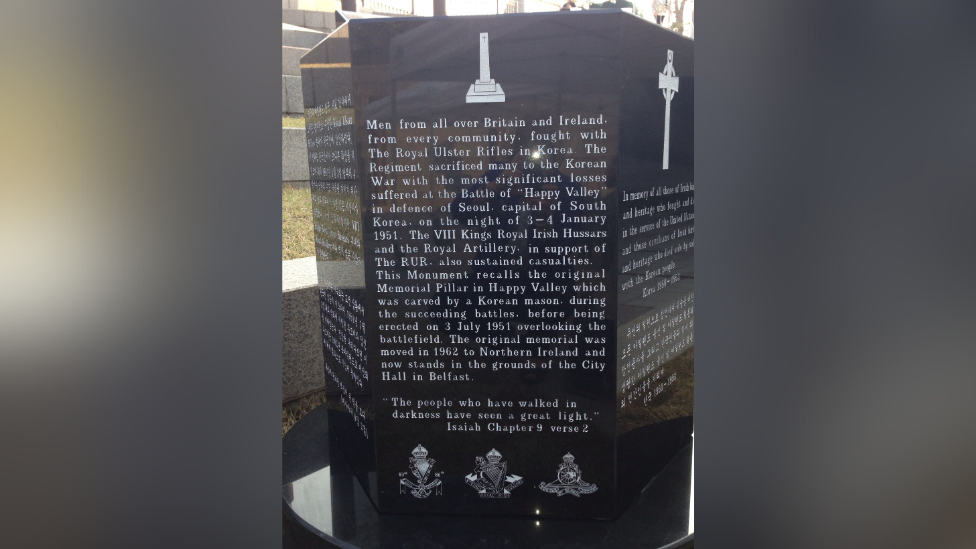
There are memorials to the RUR in both Seoul, pictured here, and at Belfast City Hall
The RUR were also attacked at Imjin River in April 1951.
Morrow was further back during the attack as his two-wheel drive ambulance wasn't preferable. The Four wheel drive American ambulances were.
RUR soldiers would leave Korea by that autumn, bound for Hong Kong.
Morrow recalled lighter moments amidst the fighting.
He remembered the battalion's Capt Charley who went to get supplies from an American supply dump that was due to be blown up as Chinese forces advanced and gave his name as 'Mickey Mouse'.
"Apparently a few days later this (American) guy went down the rifles line looking for Mickey Mouse," he laughed.
Happy Valley got its name, the lance corporal recounted, from the supplies received by the men from the Americans when they were held in reserve there and no longer moving, meaning there was time to cook proper meals.
"All you could smell was the aroma of the steaks, the turkey, whatever. It was absolutely fabulous," Morrow said.
'A utopia'
Now 97, the RUR veteran still lives in Bangor and continues to drive.
He returned to South Korea in 2013 and again in 2018, helping to dedicate a memorial to the RUR.
He said the country was now a "utopia" and "so very well advanced".
"The Korean people couldn't do enough for you.
"It's good to let the people know the part the Ulster Rifles played in that campaign.
"They were all young fellas. All volunteers, and we had a great time with each other."
Related topics
- Published27 July 2023
